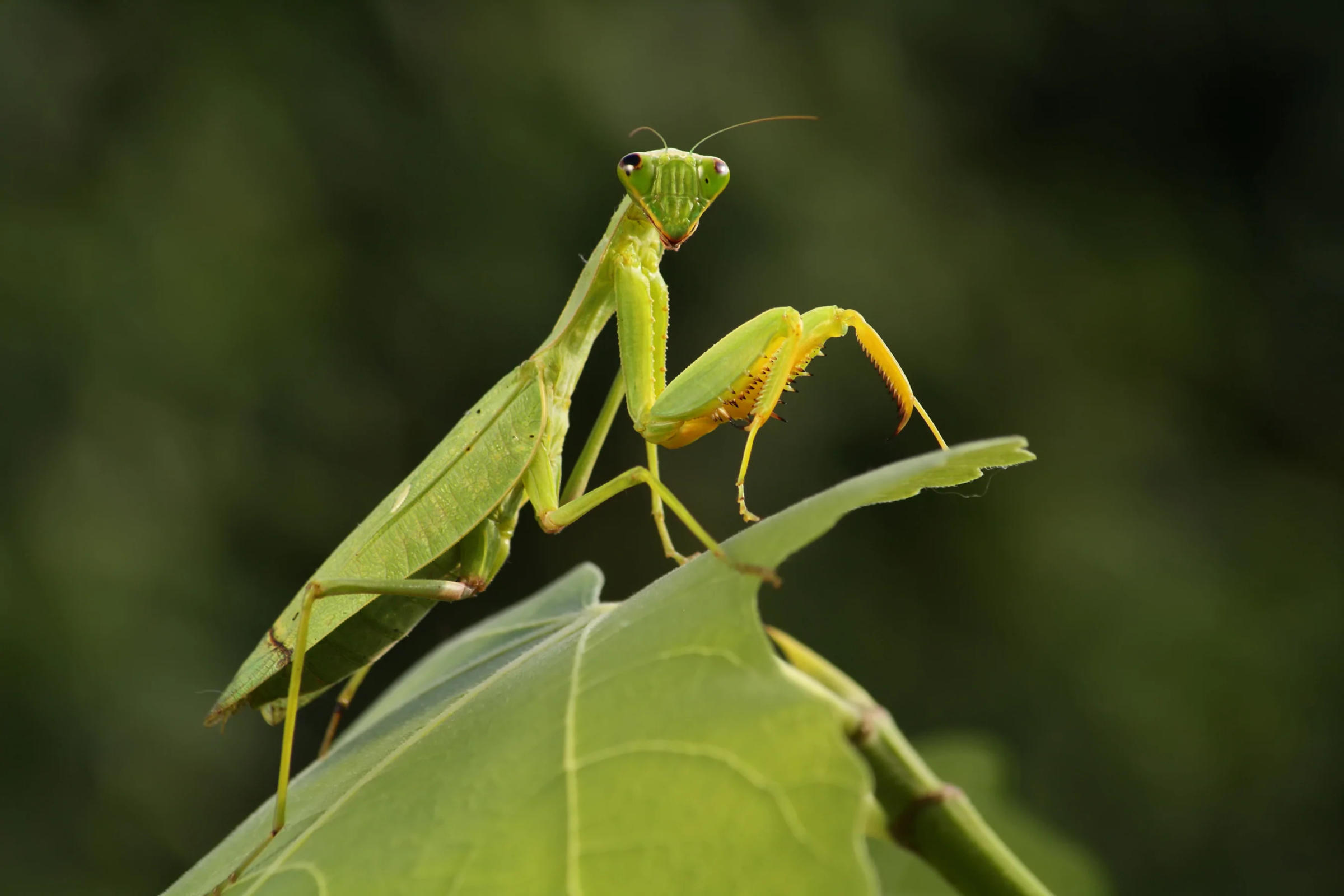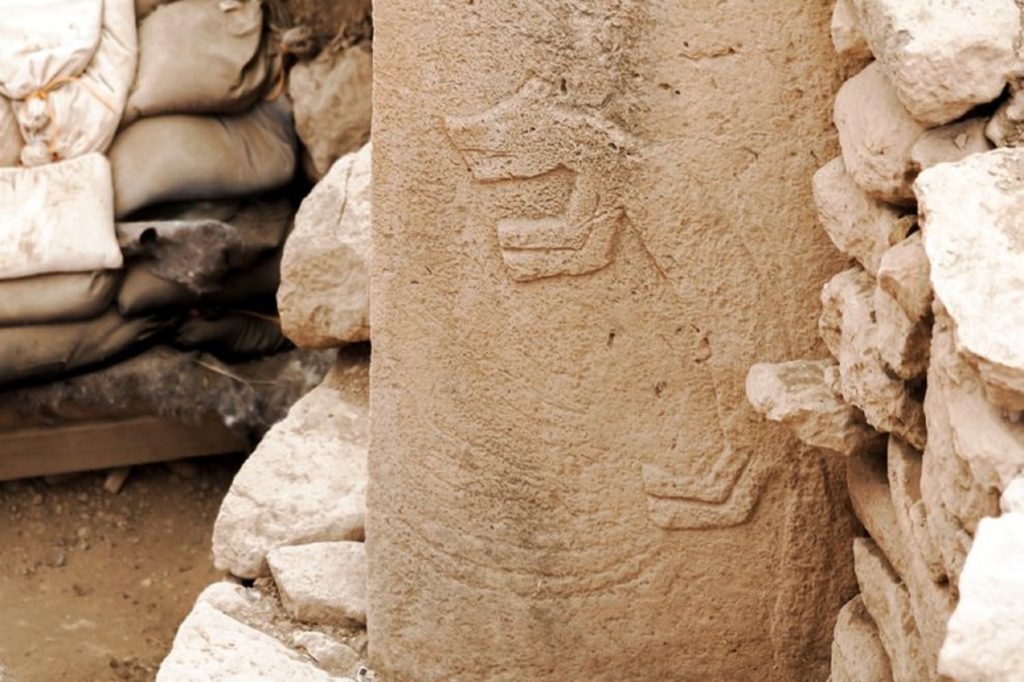
Ever since I can remember I have been fascinated by Praying Mantises. I remember the first house I lived in in Oregon had these bushes around the house that seemed to be a haven for these majestic predatory masters of the insect world. I always would go hunting for other insects to feed them and felt as if I was doing a service for them. Little did I know at such a young age the importance and amazing symbolism that are the Praying Mantises. Many years later after building my own greenhouse I even had acquired a Praying mantis egg pod which I placed into my greenhouse and after a few weeks it hatched over 100 of these beautiful creatures. About 25 or so stuck around living in their new dwelling and that was quite beneficial for my garden.
The fact that there are approximately 1,800 species of this amazing carnivores of the insect world that reside on every continent except Antarctica, there should be no surprise they would hold significance in spiritual symbolism with Human civilization for thousands of years. So today I decided to share with you some great resources regarding my favorite insect, the Praying Mantis.
In some cultures, a praying mantis can be a sign of good luck or fortune.
Native Americans believe the insect came before the creation of man and Earth. Paintings, inscriptions, revered symbols and carvings have the insect depicted as a symbol. The bugs represent wealth, success, large families and the cycle of life.
The stealth movements of the praying mantis have made it a symbol of meditation and contemplation. In China, the insect has long been honored for its mindful movements. It never makes a move unless it is certain that is the right thing to do.
In Japan, a praying mantis is a sign of autumn. The bug is often portrayed with the typical gourds and mums that are popular in the season.
Additionally, the fragile looking insect is an emblem of military strength and courage in both China and Japan because it always moves forward to advance and never retreats. SOURCE
Physical Characteristics
A praying mantis head has a triangular shape with two compound eyes with thousands of light sensors that provide them with three-dimensional vision; it’s believed they’re the only insect able to see this way.
Praying mantis don’t have pupils; instead, you see an optical illusion that’s actually just more light receptors, which is why scientists call this a pseudo pupil.
Their neck is quite flexible, so they achieve a 180° range of vision. They generally measure between 1/2 to 6 inches long, with females usually larger than males.
They have an organ similar to an ear located in the thorax, capable of hearing frequencies above the 20,000 hertz that the human ear can perceive. This allows them to hear and recognize the ultrasonic frequencies used by bats who often hunt praying mantis. SOURCE
Why Are They Called Praying Mantis?
The ancient Greeks gave them the name mantis, which means diviner because it was believed a praying mantis possessed magical abilities. This idea is still reflected in its name, mantid, meaning soothsayer.
They’re called praying mantis because their front legs join together when hunting. This method consists of staying motionless and camouflaging itself until the prey approaches close enough to catch it. Then the mantis snatches its prey with jagged forelegs and begins eating it in less than a second. Since all mantids are carnivorous, preying describes them more accurately than praying. SOURCE

A Quick-List of Praying Mantis Symbolism
- Stillness
- Awareness
- Creativity
- Patience
- Mindful
- Calm
- Balance
- Intuition
The mantis never makes a move unless she is 100% positive it is the right thing for her to do. This is a message to us to contemplate and be sure our minds and souls all agree together about the choices we are making in our lives.
Overwhelmingly in most cultures the mantis is a symbol of stillness. As such, she is an ambassador from the animal kingdom giving testimony to the benefits of meditation, and calming our minds.
An appearance from the mantis is a message to be still, go within, meditate, get quite and reach a place of calm. It may also a sign for you to be more mindful of the choices you are making and confirm that these choices are congruent.
A Divine Messenger
The Kalahari Bushmen in Africa worship and consider the Praying Mantis as the oldest symbol of God. They believed it to be an incarnation of God, and whenever they would sight one, they would try and decipher its message.
Have you ever come across a praying mantis in most of the places you’ve visited? Or may be it appears in your dreams? I’m guessing that you might have passed it off as just a coincidence, or may be you think you’ve become too obsessed with this special visitor that you see it just everywhere you go? Oh no, you haven’t become obsessed with the praying mantis neither is it a coincidence! It could mean something else too; a divine message for you, or a wake up call to view your situations more closely. SOURCE
Did you know?
Spiritual teacher Alyson Charles trusts that animals have a way of coming to us when we need to hear their messages the most. “It’s a guide trying to come into our lives, trying to get our attention,” she explains.
In the case of praying mantises, they can represent everything from precision to prophecy, contemplation to deliberation, as well as vision, prayer, perception, and synchronicity, Charles explains.
If they show up around you, it could be a sign you need to make wise choices and act with precision, deepen your mindfulness practice, or be more patient. This is a creature that encourages us to slow down and connect with inner wisdom and even sharpen our clairvoyant abilities.
Historically, she adds, the praying mantis actually inspired a form of kung fu martial arts. During the Northern Song period (A.D. 960–1126), a Chinese kung fu master named Wang Lang was inspired by the movements of the praying mantis after he lost a martial arts competition.
“He watched a praying mantis trying to catch a cicada and was inspired by the agile moves of the mantis. It is said he then collected praying mantises and took them back to the Shaolin Temple to observe closely, going on to create his own form of kung fu inspired by the mantises’ moves,” Charles writes in her book Animal Power: 100 Animals To Energize Your Life and Awaken Your Soul. SOURCE
Further Resources
Praying Mantis Meaning – What does it Mean to See a Praying Mantis?
Praying Mantis Symbolism: 14 Spiritual Meanings Of Praying Mantis




